Viola subsinuata (Greene) Greene
Common names:
Early Blue Violet, Hand-leaved Violet, Wavy-leaved Violet
Synonyms:
Viola subsinuata (Greene) Greene, Pittonia 4: 4. 1899; Viola emarginata (Nutt.) Leconte var. subsinuata Greene, Pittonia 3: 313. 1898. TYPE: Tennessee, Cocke Co., Collected within 3 mi. of Wolf Creek Station, 11 Sep 1897, Kearney 615 (incorrectly designated as HOLOTYPE by Landon McKinney, Sida, Bot. Misc. 7: 45. 1992;corrected to LECTOTYPE by Ballard et al. 2020. Journal of the Botanical Research Institute of Texas 14(2): 227): NDG33272!, internet image!).
Viola palmata auct.
Description:
As described in the species complex.
Ecology:
Same as the species complex.
Distribution:
At higher elevations in the c. and s. Appalachian Mountains, extending onto the Piedmont northward; VT, CT and c. PA south to w. NC, ne. AL and e. KY.
Rarity:
State listed in DE, RI, and VT.
Phenology:
Same as the species complex.
Affinities:
Same as the species complex.
Hybrids:
Hybridizes with V. affinis (Dowell 1910, Brainerd 1924, House 1924), V. brittoniana (Brainerd 1906b, House 1924), V. communis [or possibly V. "sororia glabrous" or V. "sororia hirsutula-like"] (Dowell 1910, Brainerd 1912, 1924), V. cucullata (Brainerd 1913c, 1924, House 1924, Haines et al. 2011), V. fimbriatula (Brainerd 1913c, 1924, House 1924, Haines et al. 2011), V. hirsutula (Brainerd 1906b, 1912, 1924), V. palmata var. triloba (Pollard 1902, Brainerd 1912, 1924, Haines et al. 2011), V. sagittata (Brainerd 1906b, 1913c, 1924, Dowell 1910, House 1924), V. sororia sensu stricto (House 1923, 1924, Brainerd 1924, Haines et al. 2011, Hastings 2018, Harvey Ballard pers. comm.). Brainerd reported that these exhibit intermediate or recombinant characteristics of foliage, chasmogamous flowers, cleistogamous capsules and seeds (where these did not abort). Brainerd reported no chasmogamous reproduction and nearly complete sterility or highly impaired fertility in cleistogamous capsules, with comparatively few viable seeds produced in all hybrids.
Comments:
Greene's protologue notes that “The only specimens seen are in the herbarium of my friend T. H. Kearney, Jr. The autumnal specimens were collected by himself in September, 1897.” His statement suggests two collections but he did not specify either as the type or indicate a single specimen in either case. The JSTOR Global Plants database has an image of one specimen, with one chasmogamous flowering plant (referred to by the handwritten addition “fls. Apr. 2” to the label) and two cleistogamous fruiting specimens presumably collected on the autumn date. The sheet has a note in Greene’s hand at the bottom, “V. subsinuata Greene Type!” . McKinney incorrectly declared the sheet as a holotype, but he serendipitously did not include the handwritten portion specifying the flowering plants, so his selection of type material refers only to the cleistogamous fruiting plants. His error in identifying the sheet as the holotype was corrected to lectotype by Ballard et al. (2020).
This violet frequently grows locally sympatrically with other cut-leaved violets, including V. palmata var. triloba, V. "palmata avipes, V. "palmata pseudo-stoneana, V. monacanora, and V. tenuisecta, and occasionally hybridizes with some of them. The present taxon also hybridizes commonly with V. sororia and other undivided-leaved species, producing a welter of intermediates which (taken across the ranges of the various cut-leaved taxa) have led to desperate confusion of species limits and misunderstanding of variation patterns. There is likely more diversity of both homophyllous cut-leaved violets and heterophyllous violets awaiting discovery, perhaps in the southern Appalachian Mountain region which we have not explored. Viola subsinuata sensu stricto is distinctive in its largest leaf blades being deeply biternately divided, its hirsute (or hirtellous) foliage, ciliate calyx, oblong to ovate obtuse to rounded sepals, short rounded auricles not elongating in fruit, strongly purple-spotted or -blotched cleistogamous capsules on short prostrate peduncles (until just before dehiscence), and light-colored seeds with small prominent darker streaks. Several collections and living populations represented in eastern Ohio, western Pennsylvania and central New York, in areas occupied by V. baxteri, produce shallowly palmatifid leaf blades and have other features such as darker seeds verging toward V. sororia. These are regarded as hybrid-derived populations here rather than including them in V. subsinuata sensu stricto as has been done in the past.
Literature Cited:
Brainerd, E. 1906b. Hybridism in the genus Viola,-II. Rhodora 8: 6-10.
Brainerd, E. 1912. Violet hybrids between species of the palmata group. Bulletin of the Torrey Botanical Club 39: 85-97.
Brainerd, E. 1913c. Notes on new or rare violets of northeastern America. Rhodora 15: 112-115.
Brainerd, E. 1924. The natural violet hybrids of North America. Vermont Agricultural Experiment Station Bulletin 239: 1-205.
Dowell, P. 1910. The violets of Staten Island. Bulletin of the Torrey Botanical Club 37: 163-179.
Haines, A., E. Farnsworth, and G. Morrison. 2011. Violaceae. In Flora Novae Angliae. Yale University Press, New Haven, CT. 873-886.
Hastings, J. L. 2018. Systematic and ecological studies of the Viola subsinuata species complex. M.S. thesis. Ohio University, Athens, OH.
House, H. D. 1923 ["1921"]. Local flora notes VIII. New York State Museum Bulletin 243-244: 13-58.
House, H. D. 1924. Annotated list of the ferns and flowering plants of New York state. Family 83 Violaceae. New York State Museum Bulletin 254: 499-512.
Pollard, C. L. 1902. A new violet from New Jersey. Torreya 2(2): 24-25.

Chasmogamous flowering habit by Bruce Sorrie
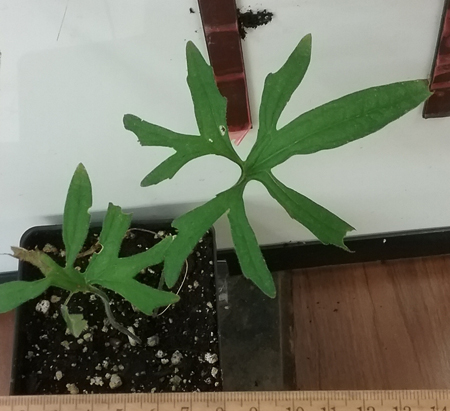
Cleistogamous fruiting habit (transplanted plant from VA, Bath Co., Beards Mountain, 1/3 way up steep slope above Wallawhatoola Road walking bridge over Cowpasture River) by Jennifer Hastings

Leaves during chasmogamous flower by Bruce Sorrie
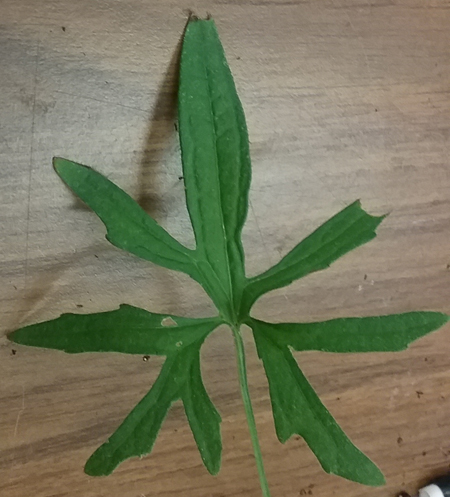
Leaf during cleistogamous fruit (transplanted plant from VA, Bath Co., Beards Mountain, 1/3 way up steep slope above Wallawhatoola Road walking bridge over Cowpasture River) by Jennifer Hastings
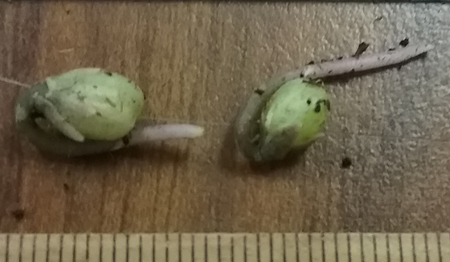
Cleistogamous fruits (transplanted plant from VA, Bath Co., Beards Mountain, 1/3 way up steep slope above Wallawhatoola Road walking bridge over Cowpasture River) by Jennifer Hastings
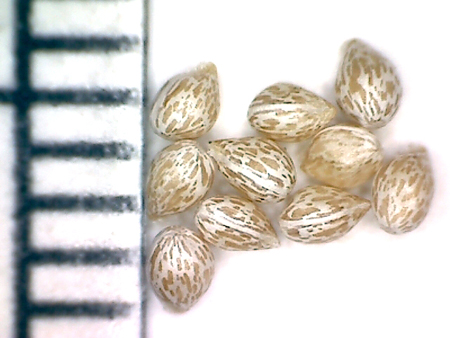
Seeds (transplanted from VA, Augusta Co., Blue Ridge Parkway, west of Greystone Farm north-northwest of Love Gap) by Jennifer Hastings
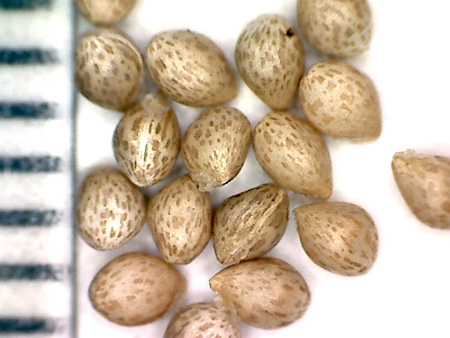
Seeds (transplanted plant from VA, Bath Co., Beards Mountain, 1/3 way up steep slope above Wallawhatoola Road walking bridge over Cowpasture River) by Jennifer Hastings
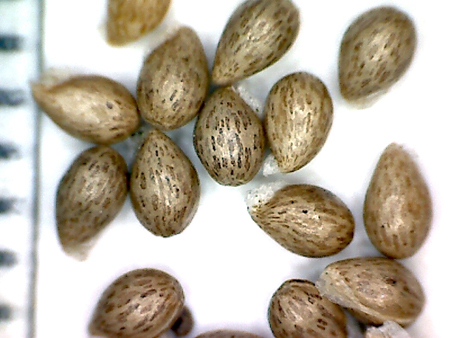
Seeds (transplanted plant from VA, Smyth Co., Pond Mountain) by Jennifer Hastings
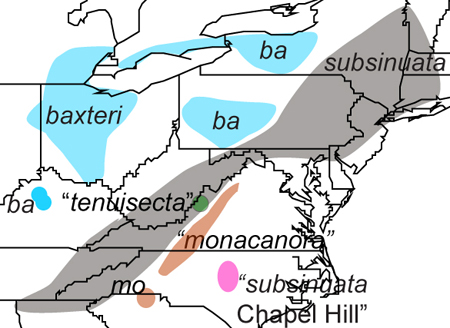
Map of taxa in the Subsinuata species group by Harvey Ballard